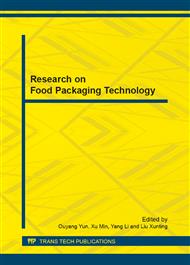p.3
p.7
p.13
p.17
p.21
p.26
p.30
p.36
Preparation and Study on Temperature-Resistance Environment-Friendly Ink Based on Natural Pigment and Soybean Oil
Abstract:
Traditional ink based on natural pigment and soybean oil has disadvantages of poor temperature adaptive in application process. This project broke the limitations that stocks printing with traditional ink based on natural pigment and soybean oil could not be used for heating. Developing practical temperature-resistance environment-friendly ink based on natural pigment and soybean oil is of great importance. The experiment introduced the silicone material, and made full use of its characteristic. The Si-O bond of silicone can be 121 kcal/mole, and its molecular bond can not be broken down at a high temperature (or exposure to radiation). The property of high temperature resistance mainly depends on its unique functional group or long polymer chain structure. The experiment studied temperature resistance environment-friendly ink's performance in color, in order to improve its practical application value.
Info:
Periodical:
Pages:
13-16
Citation:
Online since:
November 2013
Authors:
Keywords:
Price:
Сopyright:
© 2014 Trans Tech Publications Ltd. All Rights Reserved
Share:
Citation:


